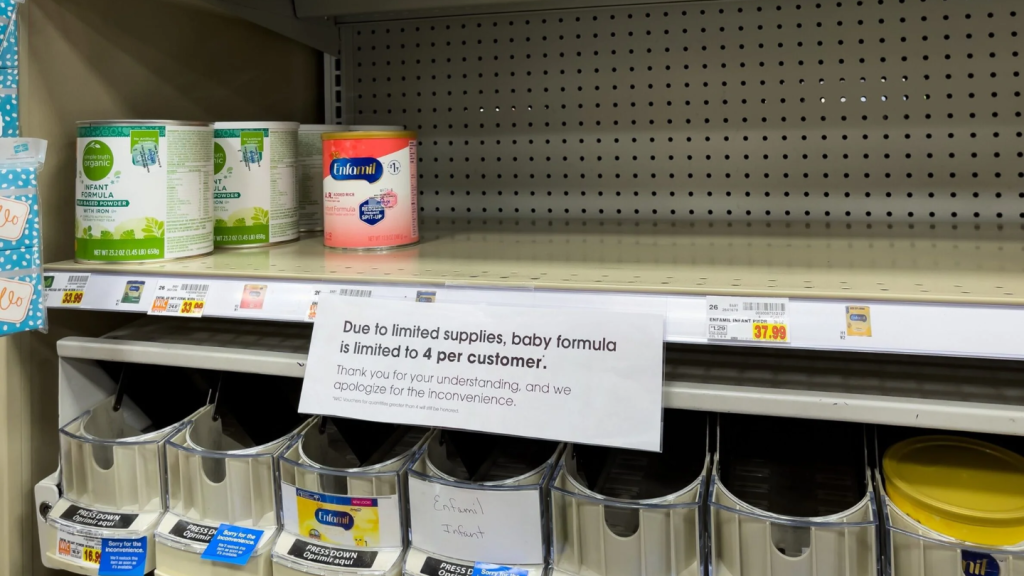The US Food and Drug Administration (FDA) has unveiled plans to “enhance” oversight of infant formula production as part of its long-term strategy to ensure a “robust and nimble” US infant formula supply chain.
This initiative is a continuation of efforts following a February 2022 product recall and subsequent shortage.
An outbreak of the potentially deadly bacteria Cronobacter sakazaaki at major infant formula supplier Abbott's factory in Michigan prompted its closure for several months and a mass product recall.
The US government was forced to invoke emergency measures to ship in emergency supplies from abroad and the situation led to a major overhaul of the FDA.
The regulator has now released a long-term national strategy to increase the resiliency of the US infant formula market.
It builds on the Immediate National Strategy introduced in early 2023.
The FDA said it is working with several government agencies as “no single agency can resolve the vulnerabilities in the infant formula market”.
Its newly-announced strategy prioritises actions to prevent contamination and protect the supply chain's integrity.
It aims to incentivise new market entrants, support collaboration, ensure stakeholders have updated information and improve information sharing.
The FDA also seeks additional tools and authorities to enhance oversight.
FDA deputy commissioner for human foods Jim Jones said: “We are proud of the actions we have taken to protect the integrity of the infant formula supply chain. We also recognise that additional efforts are needed and are committed to continued stakeholder engagement and increased oversight of the US infant formula market.”
Annual food safety inspections, including sampling of “all infant formula manufacturers”, will be conducted to enhance oversight.
Yearly targets for microbiological and nutritional analysis of samples from foreign manufacturers will be set by the FDA.
To strengthen the infant formula supply chain, the FDA will assess supply, monitor market health and address production challenges.
It aims to “prioritise review of premarket submissions for new infant formula products to mitigate or prevent shortages”.
Reinforcing redundancy risk management plans (RRMPs) for speciality formulas is also included in the plan.
To “increase resilience in supply and provide flexibility in situations of potential shortage”, the FDA will also explore international harmonisation of regulatory requirements.
The FDA’s third objective includes enhancing its collaboration with US government partners at various levels to strengthen the infant formula supply chain.
The agency aims to build long-term resilience by engaging with partners capable of influencing the supply chain beyond the FDA's control.
This includes working with the US Department of Agriculture (USDA) to support resilience and adequate reserve planning.
Additionally, the FDA will continue communicating with the Council of State and Territorial Epidemiologists, as Cronobacter has become a nationally notifiable disease.
In collaboration with the Department of Health and Human Services (HHS), including the Centers for Disease Control and Prevention (CDC), the FDA will ensure the “best” scientific information is incorporated into its work to protect public health.
The agency will also collaborate with major infant formula producers and retailers to improve information sharing and processing practices.
Efforts include hosting webinars on infant formula processing and maintaining regular communication with manufacturers to support information sharing on production levels and distribution.
The FDA said it will continue developing educational materials for consumers, medical professionals, and the industry, in coordination with HHS and other partners.
Furthermore, the FDA will work with partners to develop communication materials for potential supply disruptions or recalls.
The agency will also promote policies and information supporting breastfeeding and infant and maternal health.
The FDA’s fifth objective includes continually evaluating and updating regulations and guidance for infant formula to ensure they remain “clear and science-based”.
This involves reviewing new scientific, production, and regulatory information to determine if updates to existing regulations are necessary.
As part of its review, the FDA will evaluate current testing requirements for pathogens in finished infant formula products. This effort is led by the Office of Critical Foods.
The FDA intends to publish several guidance documents for the industry to promote market health and diversification, particularly for specialty formulas.
To ensure a safe and steady supply of infant formula for US consumers, the FDA will continue working with Congress to advance legislative proposals.
These proposals aim to strengthen the FDA's regulatory oversight and enforcement tools for infant formula safety and supply chain resilience.
















